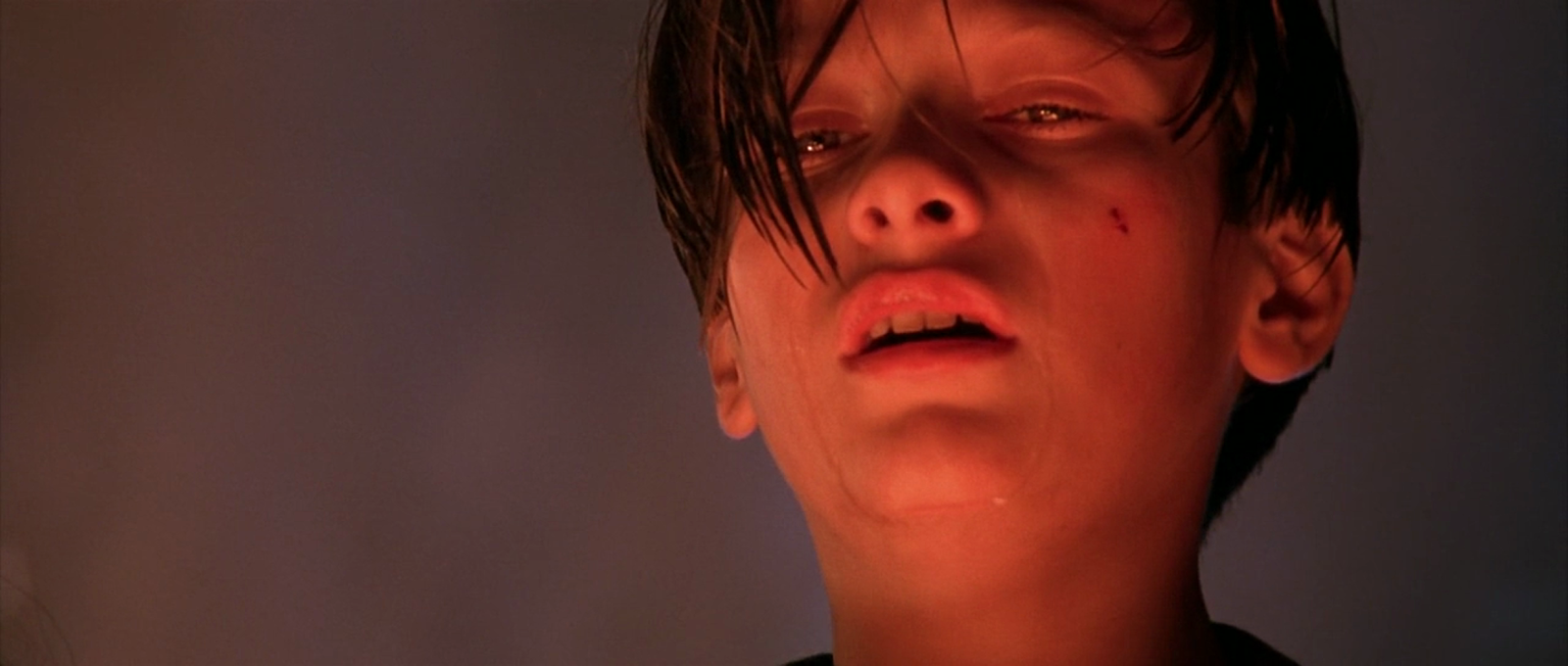In which we take
a look at the movies of yesteryear and bring some of their more subtle, less- noticeable idiosyncrasies
to the fore. Do some of your favorite films exist in the memory purely as
entertainment and nothing more? Well, look again...
A blockbuster to end all blockbusters, James Cameron's Terminator 2: Judgment Day opened in the
summer of 1991 and blew away all its competition, earning $519.8 million worldwide
(or roughly $888 million when adjusted for inflation). Cameron and his cinematographer,
Adam Greenberg, though, had more up their sleeve than state-of-the-art special effects or rock-'em-sock-'em heavy metal action; they infused the movie with a
slick, subtle color scheme that mimics the emotions of the characters.
While the daytime scenes seem naturalistic and bright, T2's nighttime sequences (and most interiors) are shot in a
cold, steel-blue palette:
This blue tint is metaphorically fitting, since every character has
been emotionally stunted in some way. Both the T-800 (Arnold Schwarzenegger)
and his liquid metal counterpart, the T-1000 (Robert Patrick), for example, are
single-minded in purpose and thought, as cold and emotionless as they come.
10-year-old John Connor (Edward Furlong) already feels the crushing
responsibility of what he is to become, and lashes out at authority figures
(foster parents, ATM machines) because of it. His mother, Sarah (Linda
Hamilton), has become as callous and uncaring as any killing machine, her body
and spirit hardened over time (in essence, she's become a Terminator herself).
And Dr. Miles Bennett Dyson (Joe Morton) has turned a blind eye to the repercussions
of his research. The crux of the movie then, will be watching these five
disparate creatures come to grips with their own humanity.
Midway through the movie, Sarah, John and the T-800 escape to the
U.S./Mexican desert, to regroup and "get in touch with their feelings."
But the shots here are stark and over-saturated, as if the characters are trying
to overcompensate:
Finally, after the T-1000 is vanquished and the future is saved (SPOILER!), our heroes stand together, unified. The T-800 has become more human, like a father to John. Sarah has overcome her prejudices and accepted the T-800 as an equal and a friend. And mother and son have bonded emotionally, years of neglect and resentment now a thing of the past. The blue has receded and the red-orange hue takes over. The characters are practically bathing in it:

















No comments:
Post a Comment